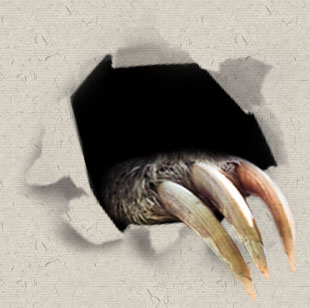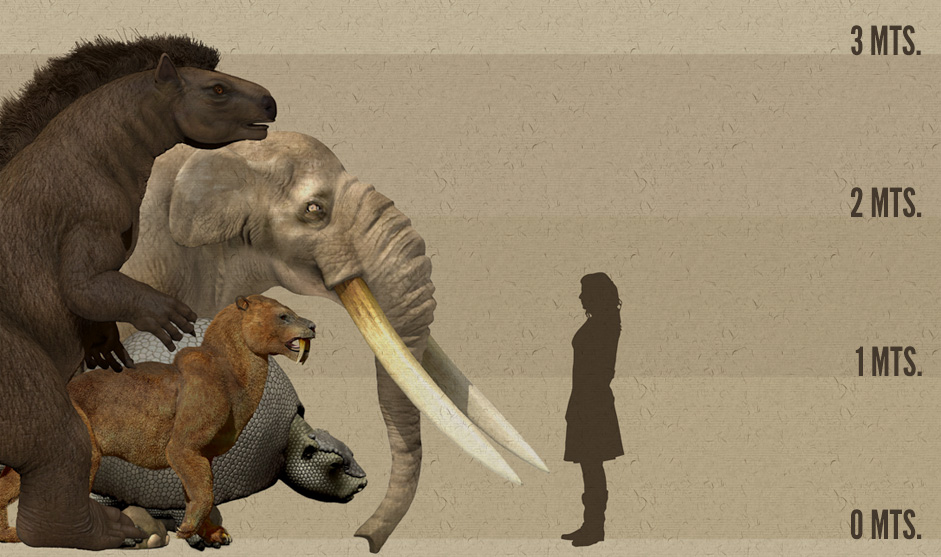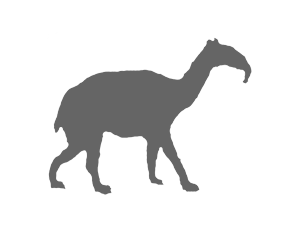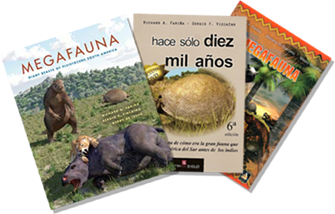Mega  fauna
fauna
This assemblage of giants that inhabited South America until geologically recent times is the most spectacular mammalian fauna of the whole world and of all times. This unusual gathering of species of over a tonne of body mass was the Darwin’s first inspiration for his theory of evolution by natural selection.
The South American Pleistocene megafauna is peculiar in every respect, at its 10 or 12 giants living together.
This is the most diverse assemblage of very large mammals known and many of them have no living analogues. Among its members we find a terrifying sabretoothed felid, a large bear, a mastodont, the armoured glyptodonts, several species of ground sloths and the odd South American ungulates Toxodon and Macrauchenia.
Ground sloths were enlarged relatives of the present-day tree sloths, those strange mammals that live upside down on the branches of the highest Amazonian trees. Among many important differences, size is paramount: at their body masses measured in tonnes, they most certainly were unable to climb trees…
Glyptodonts are relatives to armadillos, only the size of a car and with typical patterns in their scutes.
The strangest of them all are those without modern relatives: Toxodon and Macrauchenia. Both are noteworthy by their strange anatomy, as well as by their size.









